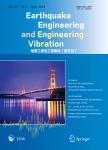Seismic hazard level reduction for existing buildings considering remaining building lifespans
Seismic hazard level reduction for existing buildings considering remaining building lifespans作者机构:Division of Architecture and Urban DesignIncheon National University
出 版 物:《Earthquake Engineering and Engineering Vibration》 (地震工程与工程振动(英文刊))
年 卷 期:2019年第18卷第3期
页 面:649-661页
核心收录:
学科分类:07[理学] 0818[工学-地质资源与地质工程] 0815[工学-水利工程] 0813[工学-建筑学] 0802[工学-机械工程] 0814[工学-土木工程] 0801[工学-力学(可授工学、理学学位)]
基 金:supported by the Incheon National University Research Grant in 2015
主 题:seismic hazard level existing building remaining building lifespan probability of limit state
摘 要:Seismic hazard levels lower than those for design of new buildings have been permitted for seismic evaluation and retrofi t of existing buildings due to the relatively short remaining lifespans. The seismic hazard reduction enables costeff ective seismic evaluation and retrofi t of existing buildings with limited structural capacity. The current study proposes seismic hazard reduction factors for Korea, one of low to moderate seismicity regions. The seismic hazard reduction factors are based on equal probabilities of non-exceedance within diff erent remaining building lifespans. A validation procedure is proposed to investigate equality of seismic risk in terms of ductility-based limit states using seismic fragility assessment of nonlinear SDOF systems, of which retrofi t demands are determined by the displacement coeffi cient method of ASCE 41-13 for diff erent target remaining building lifespans and corresponding reduced design earthquakes. Validation result shows that the use of seismic hazard reduction factors can be permitted in conjunction with appropriate lower bounds of the remaining building lifespans.



